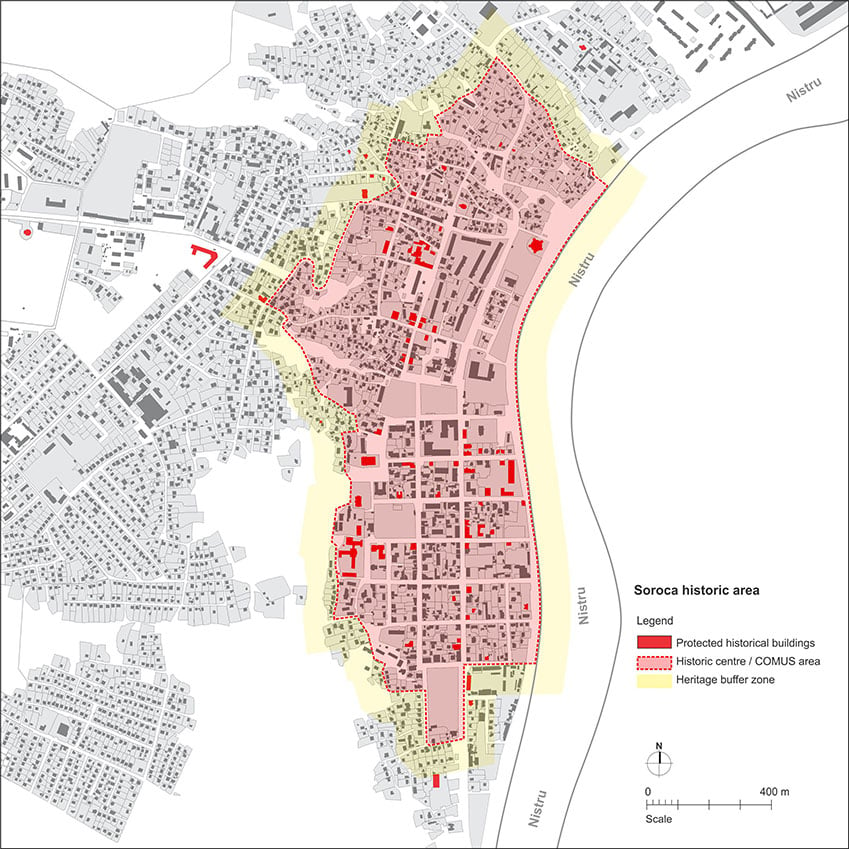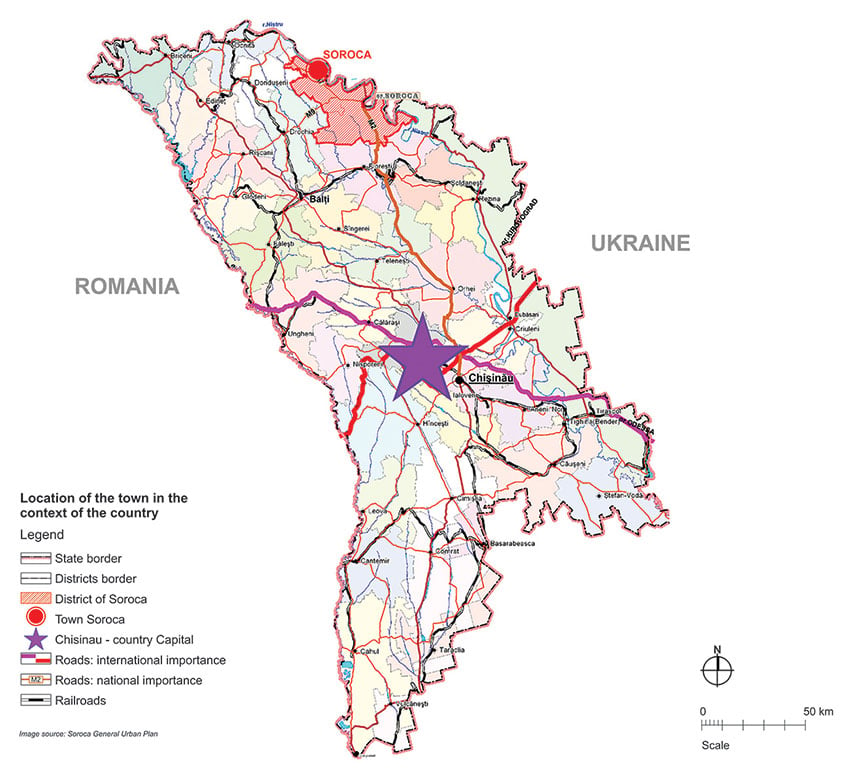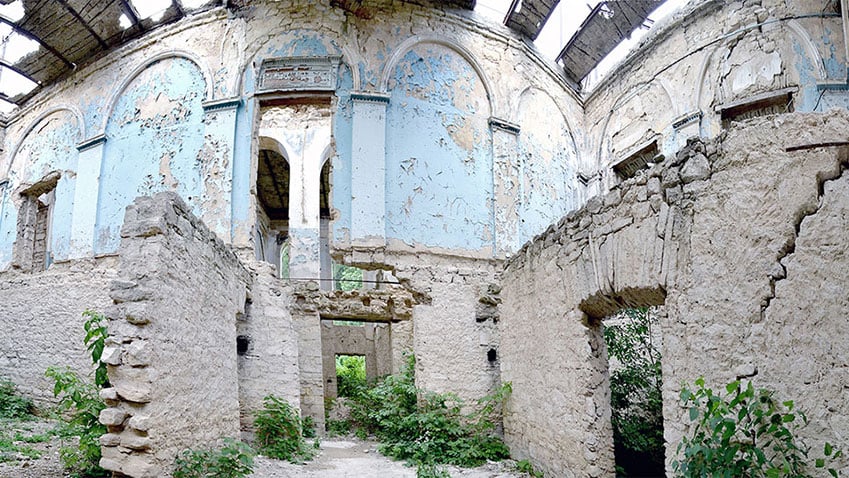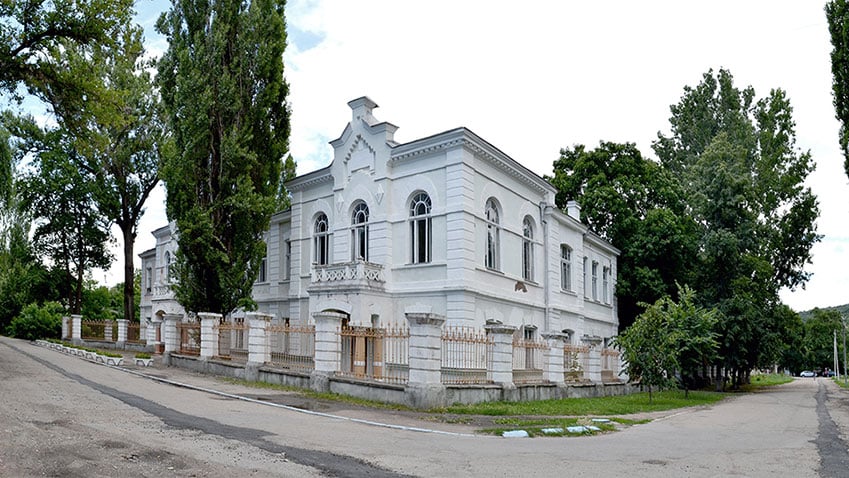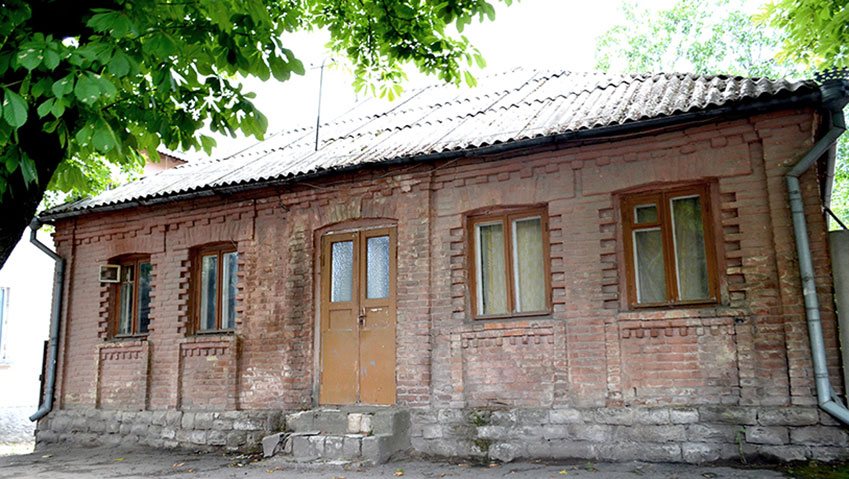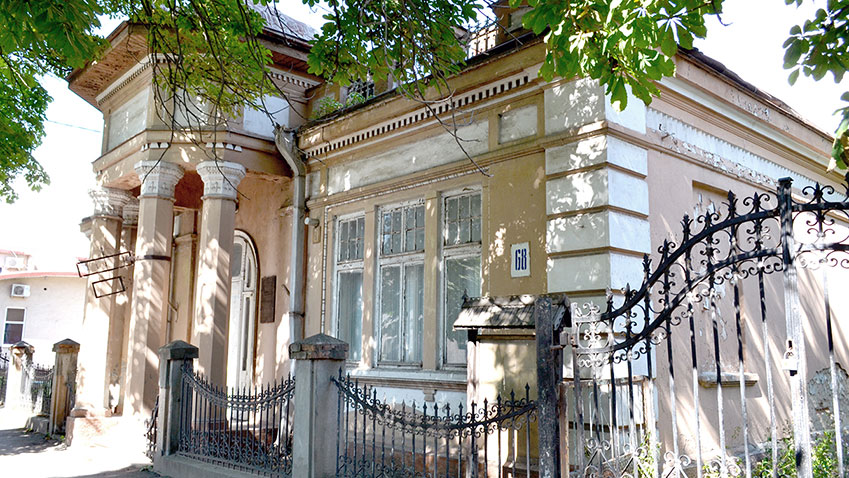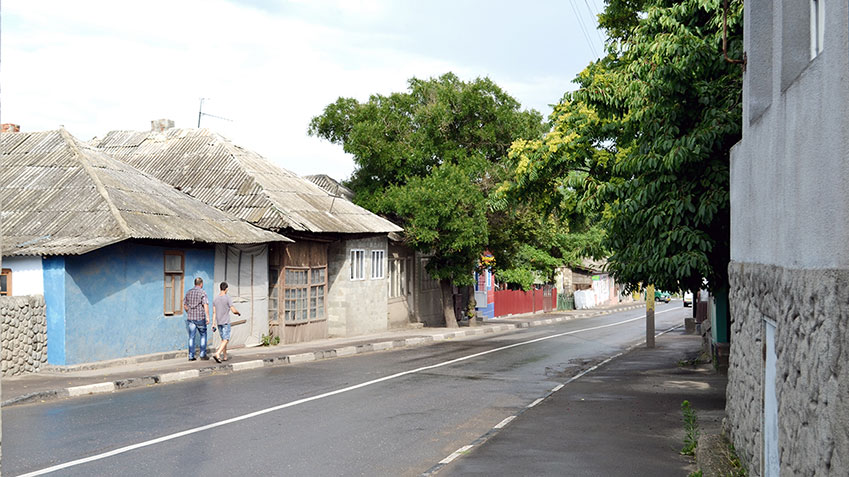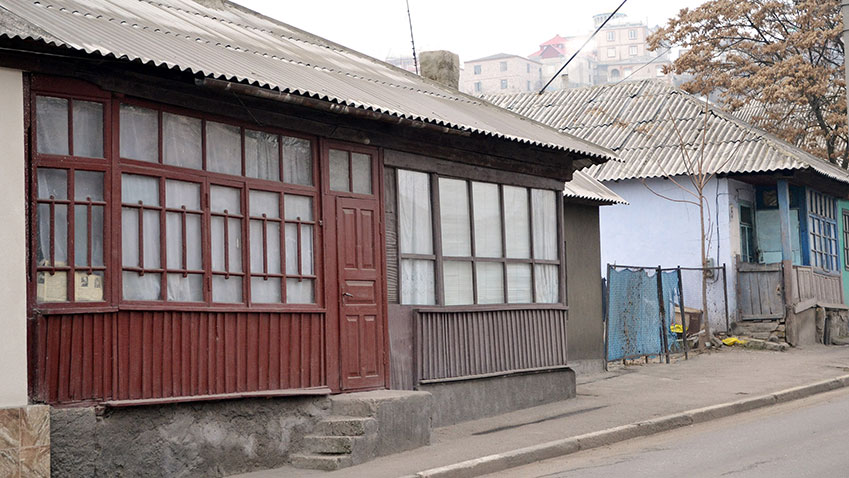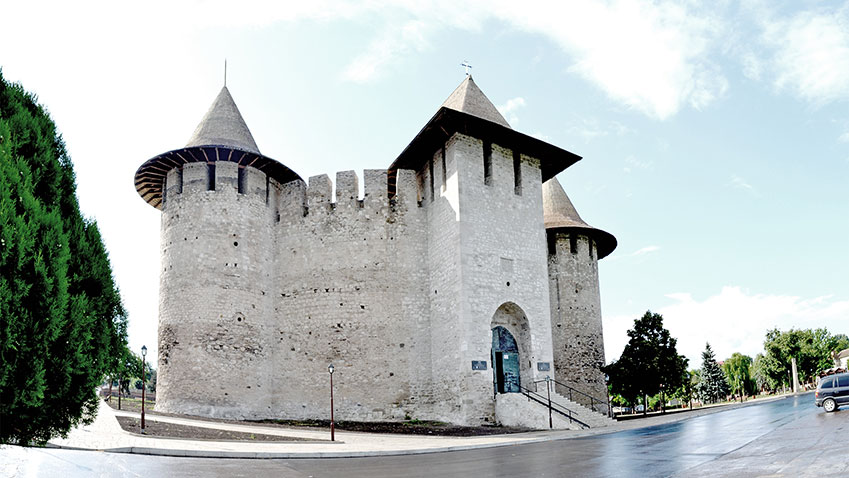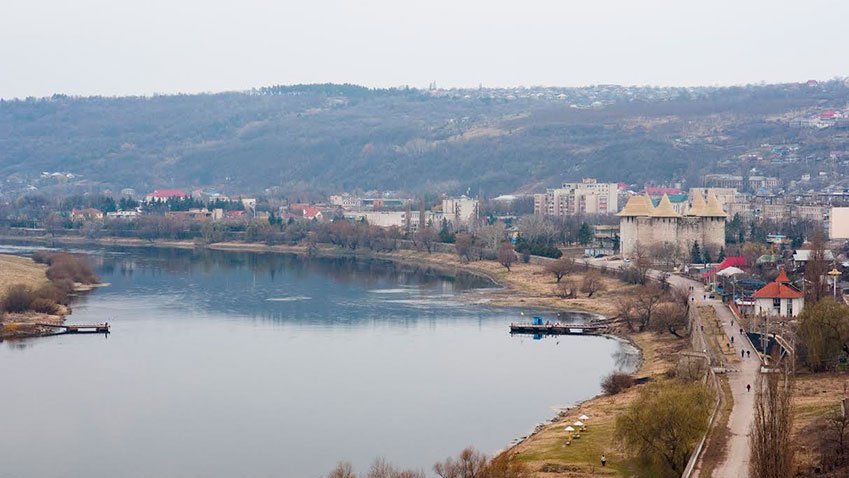COMUS Pilot town: Soroca, Republic of Moldova


Number of inhabitants: 37,441 (2015)
Size (km²): 13.11
The first documentary mention dates back to 1499. Thanks to its strategic geographical location on the ford of the Nistru (Dniester) river, the town played an important role for the Principality of Moldova during the Middle Ages. For centuries, it was the administrative, commercial, agricultural and military centre of the District. After the settlement of the Russian Empire administration in 1812, numerous different nationalities immigrated into the area. The 1902 census indicated 27 800 inhabitants, including 12 000 Romanian, 8 700 Hebrew, 7 100 Ruthenian, Russian and Armenian. During the Second World War, the city underwent destruction and massive deportation of the population. With the adoption of the Territorial-Administrative Law of 1998, Soroca obtained the status of municipality (later abolished) and became the centre of Soroca County.
 Outputs
Outputs
Soroca
- Heritage Assessment Report (HAR) in Romanian
- Preliminary Technical Files (PTF) in Romanian
- Reference Plan (RP) in Romanian + Actions in Romanian
- Preliminary Technical Assessments (PTA) :
- PTA1-Rehabilitation of the Decebal area between the Stefan cel Mare and Maria Cebotari streets in Romanian;
- PTA2-Rehabilitation of the Museum of History and Ethnography of Soroca in Romanian;
- PTA3-Rehabilitation of the “Mihai Eminescu” college (former “Domnita Ruxanda” gymnasium for girls) in Romanian;
- PTA4-Refurbishment of the Aleinicov Villa to cultural / entertainment centre in Romanian;
- PTA5-Rehabilitation of the bank of the river Nistru and its adjacent public space to pedestrian area in Romanian
- Feasibility Study (FS) :
 Statement by the Mayor about COMUS
Statement by the Mayor about COMUS
 "Soroca is one of the three cities in Moldova to be declared a historic city even back in the soviet period. Even though interventions and processes that occurred in the past half of the century significantly reduced its image of historic town, we believe that this aspect is still very important and that the existing heritage is a unique resource within the whole country. Considering the location of the town and its role as economic and cultural centre, enhancing our heritage is a strategic objective for the future development of the city. We had the opportunity to express this commitment after the recent restoration of the medieval fortress. In this context, the COMUS project, through the documents that it produces and through its methodology, comes with a necessary set of tools. By implementing these tools, we will create new sustainable economic models which will ultimately enhance the quality of life of our citizens, will attract tourists and will reaffirm the city’s role as regional cultural centre."
"Soroca is one of the three cities in Moldova to be declared a historic city even back in the soviet period. Even though interventions and processes that occurred in the past half of the century significantly reduced its image of historic town, we believe that this aspect is still very important and that the existing heritage is a unique resource within the whole country. Considering the location of the town and its role as economic and cultural centre, enhancing our heritage is a strategic objective for the future development of the city. We had the opportunity to express this commitment after the recent restoration of the medieval fortress. In this context, the COMUS project, through the documents that it produces and through its methodology, comes with a necessary set of tools. By implementing these tools, we will create new sustainable economic models which will ultimately enhance the quality of life of our citizens, will attract tourists and will reaffirm the city’s role as regional cultural centre."
Victor SĂU
Mayor of Soroca
 Priorities
Priorities
The historic area in Soroca was recently set up, the legal procedures for officially establishing the area are still ongoing. The COMUS area coincides with this historic zone. According to the existing Moldovan legislation, the buffer zone for heritage is 100 metres around protected items.
Heritage specificities:
Soroca’s specific heritage is a result of its role as economic and military centre throughout the ages. The geographic location on the northeast border of Moldova required defensive infrastructures, as the medieval stone fortress proudly standing on the edge of the river. The “old road” (now Decebal street) on which the town was built always linked various cities within South-East Europe during the XV-XVII centuries. By the middle of the XIXth century when the first urban development projects were developed, the town was expanding considerably, affecting not so much the medieval area, but quite profoundly the central part of the old town near the fortress which is totally reconstructed. There are 61 monuments listed in Soroca, which correspond to three historic periods: the Moldovan Medieval State, the New Town (XIXth century), and the Modern Town (XXth century).
Local challenges :
The built heritage suffered massive destruction during the Second World War and the subsequent post-war reconstruction, when many old houses were replaced with 5-storey apartment buildings. Several General Urban Plans developed for Soroca stipulated the total destruction of the built heritage, except for the cathedral and the fortress, and its replacement with new standardized buildings. In 2014, another General Plan was developed, the latter also having no specific provisions for historic areas, except for the listed monuments. From a heritage point of view, Soroca faces the following challenges and needs:
- To emphasize the role of heritage in urban development policies;
- To set up the historic protected area and its special conditions for interventions;
- To promote heritage as a resource for attractiveness and economic development;
- To define new partnerships between local stakeholders for developing regeneration projects;
- To increase the sense of ownership of heritage among inhabitants and civil society.
Priorities:
Heritage enhancement
Soroca has a large cultural and touristic potential that includes the city of Soroca, the old town and rich natural landscape. Each of them are valuable resources which give the heritage dimension to the town and should be considered appropriately. The main problems related to heritage preservation/enhancement are similar to those of other historic towns in Moldova and usually result in inappropriate interventions. These problems are:
- There are no regulations for interventions on historic monuments or penalties for improper interventions or demolitions;
- Local authorities face institutional, financial and professional capacity issues regarding heritage revitalization.
Habitat improvement
Main housing issues in the historic area result from the subdivision of old urban villas into small apartments and houses which were redistributed to more families after being nationalized. Many of them, until recently, faced sanitary problems and lack of access to the main infrastructures. This problem was only partially solved. Another major housing problem is a consequence of the migration of inhabitants to the capital or outside the country during the last two decades. This has led to many houses in the historic area remaining uninhabited and subject to gradual deterioration.
Social concerns
Soroca is the town with the greatest Roma minority in the country (almost 2 500 people). Several social concerns result from poor inclusion of this minority into social life: they do not participate in public matters of the town, they live separated socially and geographically, the children do not attend school, etc. However, this separation is voluntary and is not caused by other inhabitants’ oppression. There are no major inter-ethnic conflicts between different nationalities, but occasionally these can occur. Important social problems include drug use, human trafficking and criminality, especially among the Roma population.
Traffic management
Soroca faces serious traffic problems caused by the ever increasing number of cars, and a lack of proper road and parking infrastructure. This has a negative impact on the quality of roads and public spaces, especially in the historic area of the town, which is transited by the three main streets with the greatest traffic: Alexandru cel Bun st., Decebal st., and Ştefan cel Mare st. The R7 District Road used for inter-urban transit passes through the historic area. The two main markets of the town which also serve the neighbouring towns and villages are situated in the centre; during market days, big traffic jams are created on the access roads to these markets and in the surrounding areas.
Main traffic issues in Soroca historic centre include the following:
- Illegal parking of cars on the sidewalks and in public squares;
- Intense traffic and no speed limit in the area;
- Lack of parking spaces;
- Lack of pedestrian and cycling infrastructure;
- Lack of pedestrian streets and squares;
- Poor quality of public transportation;
- No policy to favour “soft” traffic and public transport.
Development of commercial and service activities
In Soroca, most commercial and service activities are concentrated in the centre of the town (mainly the COMUS area). Compared to the rest of the town, this area has the best accessibility and potential for further development if considered properly, although parking problems and the poor quality of public spaces are serious barriers.
These activities are still underdeveloped, mainly because existing constructions are used for living, and because there are no major attractions that could boost the diversification of services and facilities. The situation started to gradually change with the completion of the rehabilitation of the medieval fortress, which fostered the possibility for development of commercial and touristic functions.
Reduction of urban wastelands
The town has rapidly evolved during the last two decades. This process often included uncontrolled conversion, construction and demolition of buildings with consequences on the lands they control. In many cases, this has resulted in abandoned urban wastelands, places which favour insalubrity and crime. Whether these lands are public or private property, they are important resources for the town and should be managed according to their surrounding environment.
Enhancement of urban landscapes and public spaces
Public spaces are crucial for the social life of the town. Soroca has several spaces that have the potential to attract key functions such as commerce, services, leisure and culture with a positive impact on the community. However, these places are underused and are not properly maintained. Most of the open spaces lack basic infrastructure, are in poor physical condition and are mainly used as car parks, which causes serious damage in terms of pollution and comfort. Green places such as parks and squares are not taken care of and sometimes are abusively occupied with constructions and temporary kiosks.

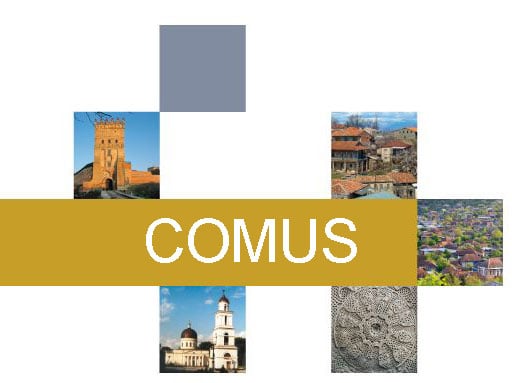
 Contacts
Contacts
Mayor of Soroca
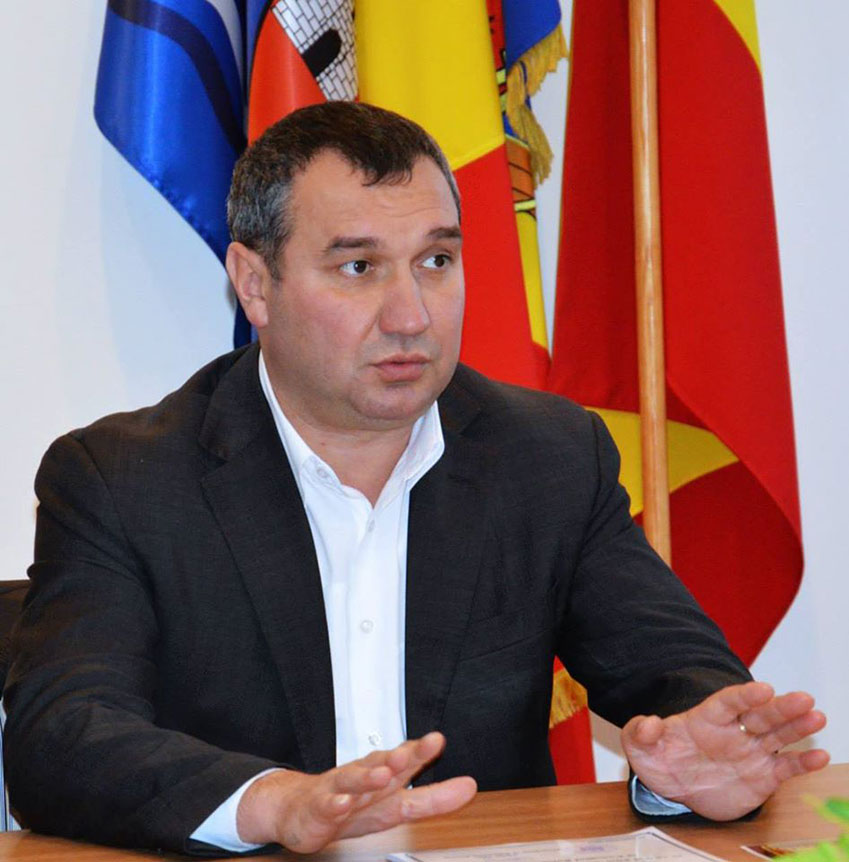
- Mr Victor SĂU
President of the District Council
- Mr Mihai MITU
National coordinator
- Mr Andrei CHISTOL
Project Officer
- Ms Dumitrita EFREMOV
Project Implementation Unit members
- Mr Vlad MOLDOVAN
Project Manager - Mr Grigore GUTU
Local Stakeholder Group Coordinator
 press
press
Public debate on selected flagship rehabilitation projects organised in Soroca
 social media
social media
 general information
general information
Location of Soroca in the Republic of Moldova
Zemstvo Palace. The headquarter of the Zemstvo between 1869-1876 and administrative palace between 1918-1944.
The Gymnasium for girls/Domniţa Ruxanda high school(1905-1944).
Modern commercial facility (end of the XIX-th century)
Urban villa (end of the XIX-th century), today the Museum of History and Ethnography
Traditional houses with verandas on Decebal street (commercial XIX-th century street).
The recently rehabilitated medieval fortress on the Nistru river (end of the XV-th century)
Panorama from the Nistru (Dniester) river bank with a view of the medieval fortress and the “Gipsies Hill”








